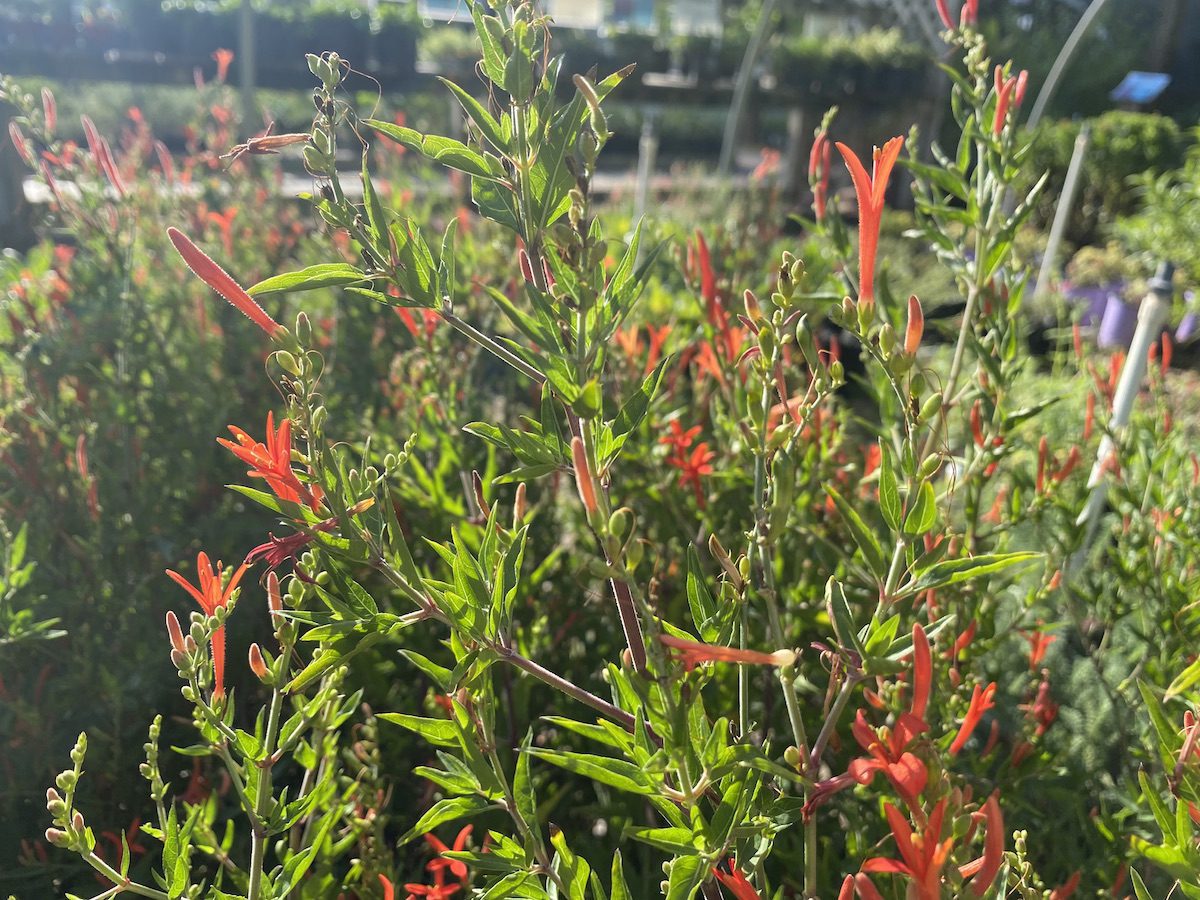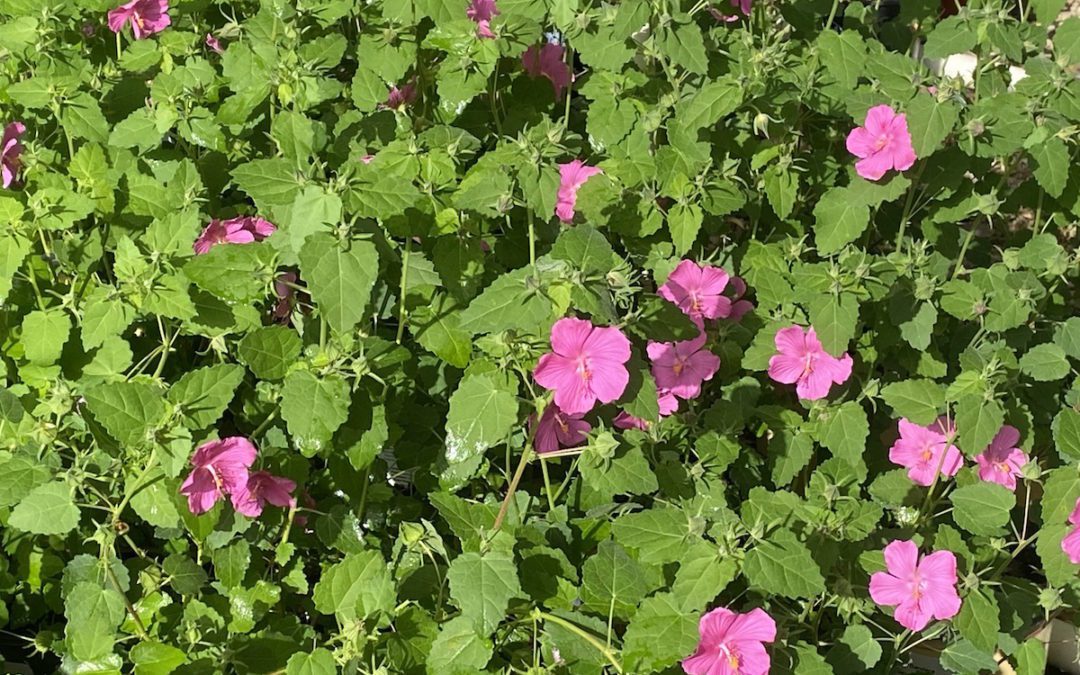The benefits of adding more native plants to your landscape are numerous. Native varieties tend to withstand the harsh conditions that our Texas climate can doll out better than non native varieties. If you choose your selections carefully, you can provide food and shelter for local pollinators and wildlife each season. Native plants contribute to replenishing our local ecosystems and let’s face it, they are just less maintenance and less trouble in the long run.
But, you must choose them wisely and you must learn a few important tips about these plants to successfully bring them into your landscape. We’ve got them for you today. (Plant pics featured in order: Pavonia Rock Rose, Flame Acanthus, Texas Fall Aster)
5 Tips for Success with Native Texas Plants
- Research specific growing requirements for native plants.
- Truly assess your own landscape.
- Avoid soil amendments.
- Don’t skimp on initial waterings.
- Back off from fertilizers.

- Research the specific growing requirements of your desired native plants. Learn all you can about any native plant that catches your eye. You need to know: average mature growth, light exposure requirements, and moisture requirements. You would also want to learn: bloom season, pollinator attraction, if the plant is evergreen or deciduous, and any pest or disease issues, if any, that might be prevalent.
2. Truly assess your landscape. Are there any areas that have issues with drainage? Do you actually have the space to grow your desired plants to their full mature habits.
The more you can mimic the natural habitat of native plants in your own landscapes by selecting plant species that match the soil, light, and water conditions of your site, the more success you will have. By also choosing your own desired size, shape, texture, and color, you create the best of both worlds.
3. Avoid adding soil amendments to true, native soil. These soil amendments are too rich for our native plants, who are used to growing in our naturally rocky, limestone soil. Again, if you are planting the right native plant in the right spot in your landscape, products like soil conditioner, compost and garden soils are unnecessary and counterproductive.
4. Even drought tolerant, native plants need plenty of water to get established. Don’t mistake the term ‘low-water usage’ for not needing to water your plant when you first buy it. The roots of all plants still need time to grow and develop before they can deliver on their “drought-tolerant” promise. It’s also worth noting that “drought tolerant, doesn’t exactly mean ”drought-proof”. In extreme temperatures and long periods without rain, even most native plants will appreciate a dose of supplemental water.
The first 2 – weeks after planting are most critical (longer if planting in hot temperatures). It can take native plants several month, to a year to year and half, to get fully established, depending on the size and time of planting.
5. Back away from the fertilizer. You might think you’ll get more blooms, or faster growth on your native plants by adding them some food, but you won’t. Most native plants flourish in infertile soil, and using fertilizer might cause chemical burns or lead to weak foliage growth and limited flower production.

So, go out and take a nature walk. Take them each season of the year to notice when these plants take their time to shine. Be observant, take pictures, make notes. And if you just don’t have a clue where to start, take a look at our following lists and do a little research. Hope you find something you like!
- Native perennials
- Native trees
- Native shrubs
- Native ornamental grasses
- Native groundcovers
- Native annuals/wildflowers
- Native vines
~The Happy Gardener, Lisa Mulroy

